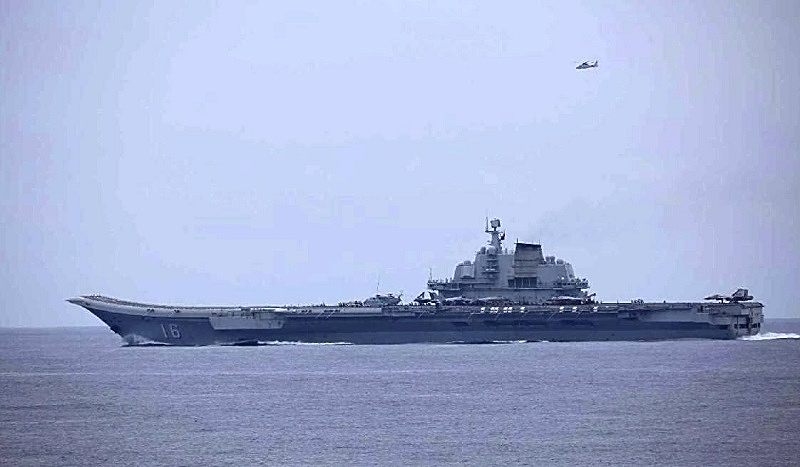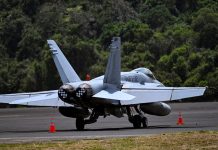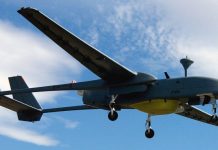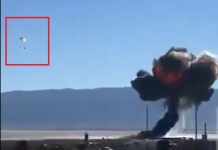In a key move to bolster security in the Indo-Pacific region, Japan and the United States have agreed to intensify their military presence on Japan’s Nansei Islands, which are strategically located near Taiwan.
The agreement was reached during a phone conversation on October 8 between Japan’s newly appointed Defense Minister, Gen Nakatani, and US Defense Secretary Lloyd Austin.
The decision to expand their joint military presence comes as part of broader efforts by the two nations to modernize their alliance, particularly in light of escalating tensions in the Indo-Pacific, where there are growing concerns over China’s assertive military activities.
During their talks, Nakatani and Austin noted the need for closer cooperation, not only between the US and Japan but also with regional partners, to counter attempts to alter the status quo by force.
Nakatani, a noted rugby fan, used a sports metaphor to underscore the importance of unity between the two allies. “We decided to form a scrum and work together,” he said, highlighting the collaborative nature of their defense strategy moving forward.

The increased focus on Japan’s far southwestern islands, which stretch across the Kagoshima and Okinawa prefectures, reflects Tokyo’s growing concern about the vulnerability of these territories in the event of a conflict, particularly with China.
Due to their proximity to Taiwan, the islands would be at the forefront of any potential military engagement in the region.
The US-Japan defense alliance has seen substantial upgrades in recent months. In July, both nations agreed to one of the most significant enhancements to their defense cooperation since the alliance was established.
This includes the US taking a more direct leadership role in operational planning, both in peacetime and during potential crises. As part of these changes, Japan’s Self-Defense Forces (SDF) are also preparing to establish a new permanent joint headquarters by March, further strengthening the country’s military capabilities.
Austin expressed optimism about the growing collaboration between the two nations, stating his hopes for an in-person meeting with Nakatani in the near future.
Japan Braces For Conflict
China’s increasing military activity around Taiwan has raised alarm bells in both Tokyo and Washington. For Japan, the implications of a potential conflict are particularly alarming due to its geographical proximity and strong security alliance with the United States.
Any military clash over Taiwan would almost inevitably pull Japan into the fray, making the strategically crucial Nansei Islands a vital defense line.
This island chain, which stretches across the southern part of Japan from Kagoshima to Okinawa, holds significant strategic importance.
Japan has shifted its defense focus from Cold War-era threats in the north, particularly Russia, to the growing challenges posed by China in the southwest. The Nansei Islands are now viewed as a critical outpost in countering Chinese military ambitions.
In the event of a conflict over Taiwan, China is expected to implement its “anti-access/area denial” (A2/AD) strategy. This military doctrine aims to block US forces from operating in key regions of the western Pacific, notably within the Second Island Chain, which extends from the Izu Islands to Guam.
The strategy would also prevent US forces from breaking through the First Island Chain, which includes the Nansei Islands and the Philippines.
Given these dynamics, cooperation between US forces and Japan’s Self-Defense Forces (SDF) in defending the Nansei Islands is crucial. This collaboration is expected to enhance the deterrence capabilities of both nations, discouraging any aggressive moves by China.
In response to these growing threats, Japan has ramped up its defense spending in recent years. The government is also advancing its efforts to establish new ammunition storage facilities and supply bases throughout the Nansei region, strengthening its logistical infrastructure in response to emerging security challenges.
On the other hand, China is fully aware of the Nansei Islands’ strategic value. In December 2022, a Chinese carrier strike group conducted drills simulating attacks on the islands, underscoring Beijing’s ambitions in the region.

Meanwhile, diplomatic tensions flared on October 8 when former Japanese Prime Minister Taro Aso referred to Taiwan as an important “country” for Japan, stirring controversy.
Tokyo, which has no formal diplomatic relations with Taiwan, has traditionally avoided any language that might anger Beijing. Beijing views Taiwan as a breakaway province that can be unified with the mainland by force if necessary.
- Contact the author at ashishmichel(at)gmail.com
- Follow EurAsian Times on Google News




